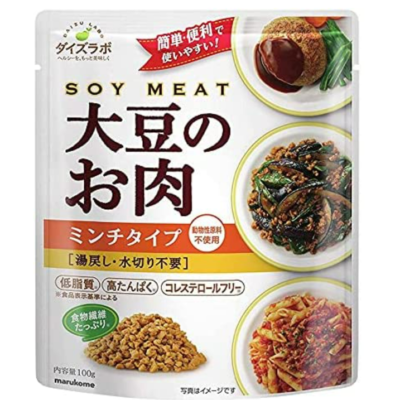Two years have passed since I came to Australia on a Working Holiday visa.
At first, there were many things I felt unsure about, but I’ve been steadily gaining experience step by step while working as an AIN (Assistant in Nursing).
And in 2025, I finally obtained a 4-year sponsorship visa (482) in Sydney !
It was the moment when all my efforts paid off and I achieved my goal.
Even with my experience as a nurse, I sometimes struggled with anxiety about the language and environment and uncertainty about the future as an immigrant.
In this article, I’ll be focusing on the flow of my shifts from morning to night, sharing my daily tasks as an Assistant Nurse and the sense of fulfillment and growth I’ve experienced along the way.
- Assistant Nurses working in Australia who want to get sponsored someday
- Healthcare workers considering a visa transition — from student, visitor, or any temporary visa
- Migrant nurses and carers feeling unsure about English, work culture, or their career path
- Those who want to learn from a real-life sponsorship success story
🌞 Morning Shift Routine
From the Start of the Day to Morning Duties
My morning shift in Sydney usually starts at 8:00. In a small-scale facility, I can take the time to focus on each resident, which allows me to build deeper relationships of trust through my work.
The first task of the day is providing personal care for the residents. While assisting with showers, oral care, and face washing, I make sure to value communication with them. In a small-scale facility, I have the time to truly focus on each individual, making one-on-one interactions an important part of my work.
☀️ Here’s a look at my...Morning Shift Routine.
| Time | Task | Details |
|---|---|---|
| 7:00 | 🛁 Personal Care | Provide each resident with showers, bed baths, changing clothes, oral care, and face washing. |
| 8:00 | 🍳 Breakfast | Prepare porridge and toast, and assist with meals. |
| 9:00 | 🚶♀️ Morning Walk | Walk and wheel together nearby for exercise and refreshment. |
| 10:00 | ☕ Morning Tea | Enjoy baked treats and smoothies, and relax in the garden on sunny days. |
| 10:30 | 🎨 Morning Recreation | Newspapers, books, coloring, stretching, ball games, cooking, and more. |
| 11:00 | 🍲 Lunch Preparation | Start cooking lunch. |
| 12:00 | 🍽 Lunch | Serve lunch and assist with eating |
| 13:00 | 🧺 Laundry, documentation, and cleaning | Do the laundry, clean, and complete documentation. |
| 14:00 | 🎵 Afternoon recreation | Relax with massage, napping, or music therapy. |
| 15:00 | 🍵 Afternoon Tea | Enjoy tea and light snacks for a relaxing time. |
※ Note: I start work at 8:00, but the other morning staff member starts at 7:00.
In Australia, morning shifts typically start in the 6 o’clock hour (such as 6:00 or 6:30),
but at my facility, the morning shift starts a little later.
Advantages and Rewards of Care in Small-Scale Facilities
In Sydney, working in small-scale facilities or providing home care offers the great advantage of being able to spend quality time with each patient. The smaller the group, the more time you can dedicate to each individual, making personalized care possible.
By thoroughly understanding each patient’s condition and needs, we can provide the most suitable support, allowing us to build deeper relationships of trust. Relationships with families also grow stronger, and through daily care, we can offer a sense of security and trust — one of the most rewarding aspects of our work.
In small-scale facilities, you can feel a strong sense of responsibility for each task, which allows you to truly recognize the importance of your role. Because it is a smaller facility, you are encouraged to be actively involved in every aspect of the work and to think about what can be done to improve the quality of life for patients.
For example, you can offer recreational activities tailored to each patient’s hobbies and preferences, which helps strengthen your bond with them. These small daily efforts contribute to creating a comfortable and welcoming environment for patients.
In this way, care in small-scale facilities offers the fulfillment of personalized support and a deep connection with patients, which becomes a source of daily motivation.
☕ Afternoon Shift Routine
Afternoon tasks and patient care
The afternoon shift is a time to maintain close engagement with patients while providing moments of relaxation and carefully carrying out daily care and cleaning tasks. In this way, supporting the physical and mental well-being of patients is a key role of the afternoon shift.
🍵 Here’s a look at my...Afternoon Shift Routine.
| Time | Task | Details |
|---|---|---|
| 15:00 | ☕ Afternoon tea | Serve tea and light snacks, creating a relaxed and enjoyable atmosphere. |
| 16:00 | 🍳 Dinner preparation | Start cooking dinner |
| 16:30 | 🛏 Transfer wheelchair users to bed | Two staff members use a lift to assist with transfers, as well as changing and providing personal care. |
| 17:00 | 🍽 Dinner | Serve dinner and assist with eating |
| 18:00 | 🚶♀️ Assist ambulatory residents to bed | Assist with changing clothes and brushing teeth before guiding them to bed |
| 19:00 | 🧹 Kitchen clean-up & laundry | Clean the kitchen and prepare breakfast for the next morning, and organize the laundry. |
| 20:00 | 🌸 End of shift | Hand over to the night shift and clock out |
Differences and Rewards of Morning and Afternoon Shifts
The morning shift is filled with back-to-back tasks such as personal care, meal assistance, and taking patients for walks,making it a busy and fast-paced period.Even in the midst of the hustle,there is great value in one-on-one interactions,which help build trust and meaningful connections.
In the afternoon, tasks can generally be carried out at a more relaxed pace, allowing fordeeper engagement with patients through recreational activities and tea timeIt’s a time with a calm atmosphere, making iteasier to feel a genuine connection.
- ☀️ Morning Shift: Supporting patients through a busy morning and feeling a strong sense of accomplishment.
- 🍵 Afternoon Shift: It allows you to build deep trust at a relaxed pace.
🌙 Night Shift Routine
Night tasks and patient care
At night, patient conditions are monitored every two hours to detect any changes even while they are resting peacefully. As the shift is generally handled alone, close attention is paid to each patient, carefully observing their condition.
The night shift, unlike regular shifts, is generally a quiet period. However, since sudden changes in a patient’s condition can occur, it is important to always respond with care and attention. At night, you oversee the entire facility alone, which comes with significant responsibility.
※ Note: In small-scale facilities, there is usually only one night shift staff member.
In general aged care homes, there are often two or more staff members per section on night shift.
🌙 Here’s a look at my...Night Shift Routine.
| Time | Task | Details |
|---|---|---|
| 20:00 | 📝 Handover & Meal Preparation | Cut and prepare vegetables and fruits for the next day’s lunch and dinner. |
| 20:30 | 🧁 Make Baking | Bake muffins or banana bread for the next day’s morning tea. |
| 21:00 | 🛏 Personal care | Diaper changes |
| 22:00 | 🧹 Floor cleaning | Sweeping and mopping the floor |
| 23:00 | 🚿 Cleaning the toilet and shower room | Making the toilet and shower area sparkling clean |
| 00:00 | 🏠 Cleaning the entire house | Dusting furniture and cleaning the staff room and garage |
| 01:00 | ☕ Break time | Taking a break or a nap between tasks |
| 04:00 | 🛁 Personal Care | Shower or bed bath, assisting with changing clothes, and brushing teeth |
| 05:00 | 🧺 Laundry | Laundry of bath towels and clothes |
| 06:00 | 🍳 Breakfast | Preparing and serving porridge or toast, and providing assistance |
| 07:00 | 🌸 End of shift | Handing over to the morning shift |
Responsibilities and Rewards of the Night Shift
During the night shift, if a patient’s condition suddenly changes, it is necessary to contact a nurse or call an ambulance immediately. Even during the quiet night hours, there is always a need to be prepared. The reward of the night shift comes from the sense of responsibility that you are at the center of protecting the patients in the facility. Moments when you can truly feel that you are providing solid support during the quiet hours of the night are what make the work rewarding.
During the night shift, the slower pace of work allows more focus on patient interaction and care, but sudden changes and urgent situations can still arise, requiring flexibility and quick responsiveness.
Conclusion
🌟 If you’re interested in building a nursing career in Australia
✨ and learning about the process of obtaining a 4-year Sponsorship Visa (482),
be sure to check out the article below! 📖🌸











No comments yet.